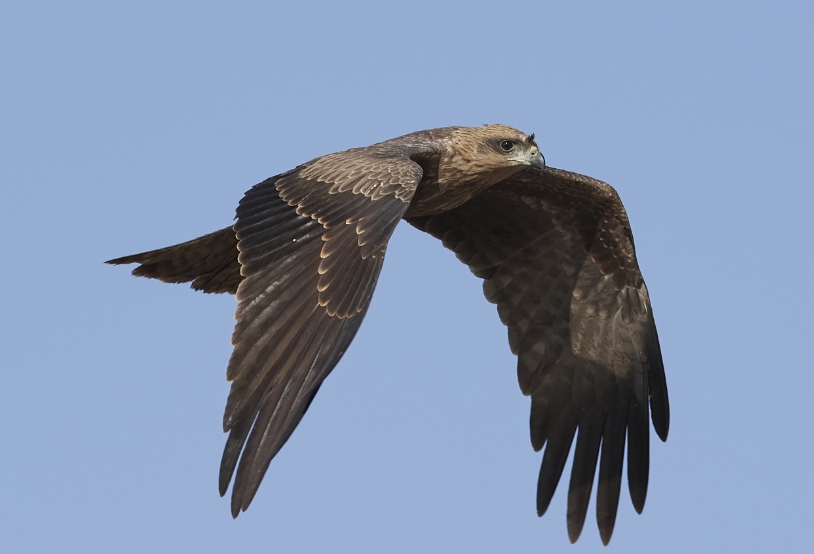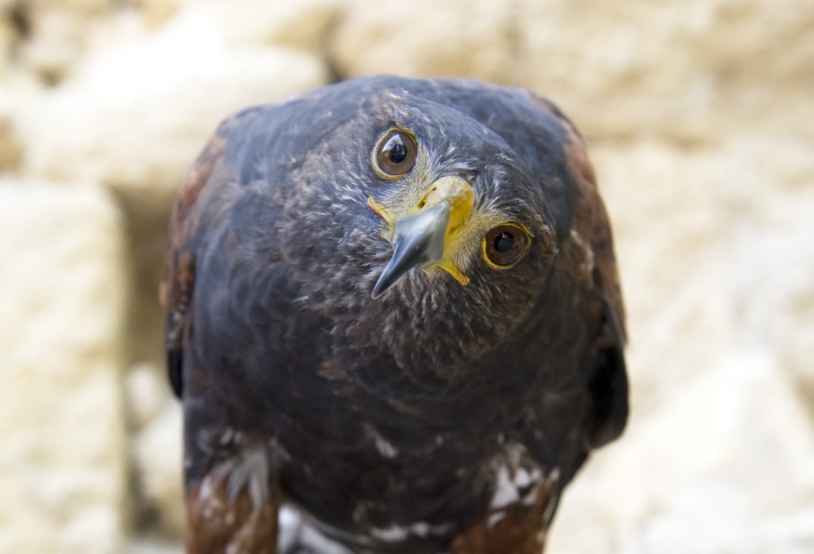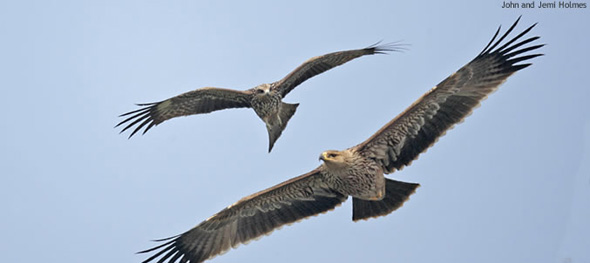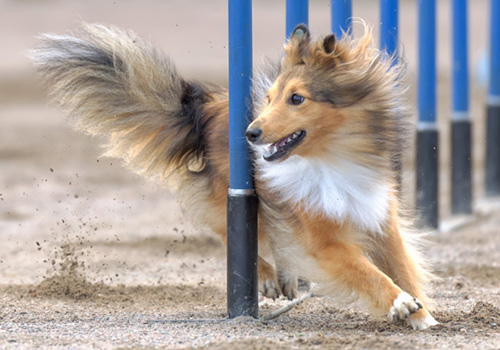Hong Kong’s Raptors
More than 500 species of birds have been recorded across territory from tiny, colourful flowerpeckers to the numerous raptors that soar amongst the skyscrapers. Black Kites are the most common but there are 35 other species of raptor in Hong Kong ranging from tiny hawks to huge vultures:
Black Kites
While a few dozen pairs of Black Kites breed here in the spring, many hundreds arrive from northern areas of China in the autumn. Numbers swell from the summer population of about 200 to over 1,000 birds making it our most common raptor. In winter, huge flocks can be seen at dusk coming in to roost at favourite sites such as Magazine Gap and the Peak.

Kings of the Sea
Sharing the harbour with the kites is an impressive eagle that can weigh three times as much, the White-bellied Sea Eagle. This large eagle is mainly found on the coasts of the outlying islands and Sai Kung but it does occasionally frequent urban areas and has even been seen perching on buildings in Wanchai North. White-bellied Sea Eagles are especially fond of fish and snakes. They possess amazing flying skills, snatching their prey from the surface of the water.
There is another raptor in Hong Kong that has even greater fishing skills: the Osprey. Capable of diving into the water to pull out its catch, Ospreys prefer the coast on the western side of the New Territories and are mainly found in the Deep Bay area near Mai Po Marshes.
A third raptor that specialises in catching fish is the Brown Fish Owl, a very large animal that can be found in the Sai Kung Area. It prefers estuaries but has sadly has lost almost all of its preferred habitat to development.
Woodland Residents
Hong Kong’s maturing woodlands have resulted in growing numbers of resident woodland raptor species including hawks, eagles and owls, the most common of which are the Crested Goshawk and the Collared Scops Owl.
Totally absent in Hong Kong just a few decades ago, the Crested Goshawk was rediscovered in the 1980’s and quickly became the second most common raptor, being found in woodlands on Hong Kong Island and throughout the New Territories. They are powerful and fearless predators and can hunt prey as large as themselves. But they are rarely seen, spending most of their time under the canopy of their woodland habitat.
The Collared Scops Owl is a small owl that can be found throughout the territory where suitable woodland exists. They can be heard making their soft mournful hoots all through the night repeated at intervals of about 10-15 seconds.

Deep Bay Eagles
The area around Deep Bay, from the Mai Po marshes and extending along the border to Lo Wu, is a hotspot for Hong Kong raptors. Here you can see the Spotted Eagle, the magnificent Imperial Eagle and the absolutely gigantic Black Vulture, a bird that stands almost a metre tall and has a wing span of up to three metres. These giants are winter visitors, with a dozen or so of the Spotted and the Imperial Eagles visiting between October and April, and a handful of Black Vultures visiting every few years.

Wandering Migrants
Hong Kong is on an important migration route for some raptor species that drop in to rest before continuing their journey. This gives us a chance to see some fascinating species including the Chinese Goshawk, the Grey-Faced Buzzard, the Oriental Scops Owl and the Northern Boobook Owl, all of which spend the winter south of Hong Kong and the summer to the north. These raptors can turn up literally anywhere and some of them can sometimes be seen in huge migrating flocks of 100 or more.
Conservation
Hong Kong really does have a very diverse range of raptors and it is great news that some species are doing so well. However, we must not forget that others are losing important habitat and we need to ensure remaining habitats in Hong Kong are conserved.
Hong Kong’s Mammals
Hong Kong is home to diverse species of local wild mammals, which vary in size, habits and characteristics. There are large mammals such as wild boar and muntjac deer, as well as leopard cats, civet cats, porcupines, many species of bats and even strange ant-eaters called pangolins. Below is a small selection.
Pallas’s Squirrel
Although the Pallas’s Squirrel can be spotted all over Hong Kong, they are not indigenous. It is believed they bred from either escaped or released pets. With a small head and a body length of 17-21 cm, this animal’s most noticeable feature is a long, bushy tail. Its diet depends on the season and this versatile eater munches on whichever leaves, flowers, fruits, seeds and nuts are plentiful. Take a moment to spot the squirrel during the Bauhinia flower blooming season (November to March) high atop the branches.
Active during the day, these little guys can be seen in our parks and playgrounds. However, the squirrel likes a quiet and hidden place to rest, so they are difficult to find after dark. They may not be native to Hong Kong, but the Wild Animals Protection Ordinance (Cap. 170) keeps them safe in their new home.
Chinese Pangolin
The Chinese Pangolin is covered in greyish overlapping body scales and has a small pointed head. It is generally between 36 and 50 centimetres long with a tail that can add as much as an additional 40 cm. When threatened, this odd-looking animal rolls into a ball.
A solitary and nocturnal creature, the Pangolin does not wander far from its home on a forest floor, a grassy hillside or in humid woodlands. Using their long and sensitive snouts to root out a daily diet of termites and ants, their powerful limbs and sharp claws help secure their food. The Chinese Pangolin has no teeth but instead extends a long sticky tongue to trap prey.
Although protected here in Hong Kong, the Pangolins living in the mainland are hunted for their meat and a belief that their scales possess medicinal properties.
Red Muntjac Deer
If you hear a bark in the woods, it might just be the Red Muntjac. This small deer, at 90-110 cm in length, is slightly larger than its cousin the Chinese Muntjac and has a distinctive dog-like barking call. It has long and protruding canine teeth but only the male sports antlers. As an herbivore, it eats leaves, twigs and various fruits.
The deer is best spotted in forests and scrublands on a foggy evening. Aprt from the breeding season, the animal is solitary and territorial. Muntjacs like to hide in dense shrubs and thick tree cover to avoid domestic dogs, Burmese Pythons and humans. The Red Muntjac marks its territory with secretions from beneath its eyes. It is a protected species in Hong Kong.

Eurasian Wild Pig
The largest wild animal in Hong Kong is the big-headed Eurasian Wild Pig which can grow to a length of 2 metres. The males have prominent tusks and prefer to spend their lives on their own. The female pigs, however, form herds with their young piglets which are born with alternately pale and dark protective stripes that fade as they mature.
Most prominent on Lantau Island and in Sai Kung, Sha Tau Kok and north of Plover Cove Reservoir, these nocturnal creatures forage for food in woodlands, grassland and even on agricultural land during the early morning or late evening.
The Eurasian Wild Pig is an omnivore eating roots, leaves, grasses, vegetables, eggs, earthworms, snails, insects, small animals and even carrion! Although unaware of the effect they have on their environment, their food-rooting turns over soil and helps plants to grow.
Their indiscriminate foraging, though, often forces farmers to set up electric fences to keep them from destroying crops. The pig is not protected by law.












